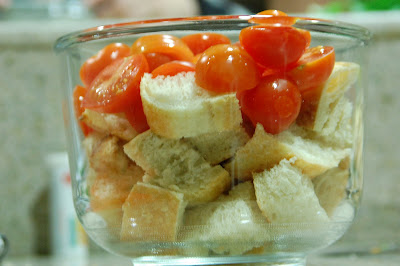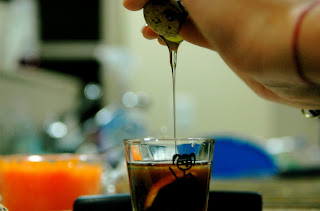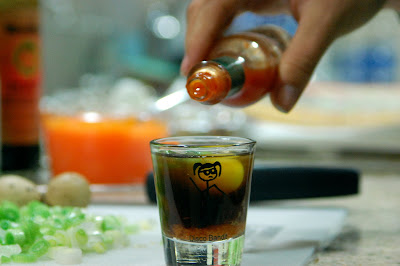 Oh my god. Burrata. Yes, it does mean “buttered” in Italian, and it has about the same amount of fat per serving. That disclaimer having been given, when you eat this soft mozzarella surrounding cream of mozzarella packed in mozzarella sauce, the part of your brain that thinks about calories will be entirely disabled.
Oh my god. Burrata. Yes, it does mean “buttered” in Italian, and it has about the same amount of fat per serving. That disclaimer having been given, when you eat this soft mozzarella surrounding cream of mozzarella packed in mozzarella sauce, the part of your brain that thinks about calories will be entirely disabled.Traditionally packed in leek leaves, burrata now usually comes in plastic wrap or containers, though often bearing a design of leaves. If you do find burrata wrapped in leaves, make sure the leaves are green all the way through, as this indicates freshness.
Burrata is crafted in a fashion similar to regular mozzarella in the Apulia region of southern Italy. Instead of forming a solid ball of curd, the solid, stretchier part is wrapped around leftover scraps (stracciatella-“little rags”) of softer cheese and cream which form to make the creamy filling, called “panna” in Italian, and knotted inside the final product. If you ever get a chance to stuff pasta, and I really hope at some point you do, add some of this. Think of all the pop ravioli fillings you’re tired of seeing on a menu- pumpkin, lobster, sun dried tomato- not that there’s anything wrong with them, but visualize pumpkin and burrata ravioli. Porcini and burrata tortellini. Crab and burrata cannelloni. Burrata tossed with fresh rigatoni, broccolini and chili flakes. Someone stop me, please.
Burrata absolutely will not stay fresh once you free all that stringy, gooey goodness inside. Make sure you can use the entire hunk in whatever you’re making, like bread and burrata salad, one of its simpler manifestations. Suffice it to say, I have never had a leftover problem with this particular offering.
Ingredients in Los Angeles, ingredients in New York
Bread and Burrata Salad
12 oz. burrata (don’t drain it, everything in that package is tasty)
10-15 small (cocktail) tomatoes
1 loaf crusty Italian bread
1 bunch basil
The most virgin olive oil you can find, really green
Good balsamic vinegar
Coarsely ground black pepper
Kosher salt
With a sharp serrated knife, slice the bread into 1-inch cubes and place in a large bowl.


Slice the tomatoes in half (or quarters if you use larger ones) and add them on top of the bread cubes.


Carefully turn the burrata out of the container onto a cutting board and roughly chop into a dozen or so pieces. They will not be well formed, as once you cut into the cheese it will cease to be a solid and will live somewhere between elasticky string thing and amorphous blob, so however this step turns out is perfectly fine. Scoop the cheese off the board and add it to the bowl.

Make a chiffonade out of your basil, gently feeding the leaves into the rocking motion of your knife. Try to avoid “bruising” the leaves too much, as this causes them to lose their shape and color and quickly oxidize into basil mush.

Using your thumb, partially cover the mouth of the olive oil bottle and drizzle a couple of tablespoons on the salad (6-8 seconds of moderate drizzlage should suffice). Repeat this step using the balsamic vinegar, but dispense about half the amount.

Add a large pinch of kosher salt and copious amounts of fresh coarsely-ground pepper. Peper it squarely. <-- not a typo, check out Achewood.

Plunge your hands into the whole business and squeeze continuously for about 15 squeezes.


Eat with your hands at this point like you’ll be tempted to, or serve immediately. Unfortunately this dish must be consumed right away and in its entirety, because if it sits for too long, even in the fridge, the bread will get soggy. Like I said, it just won’t be a problem.















